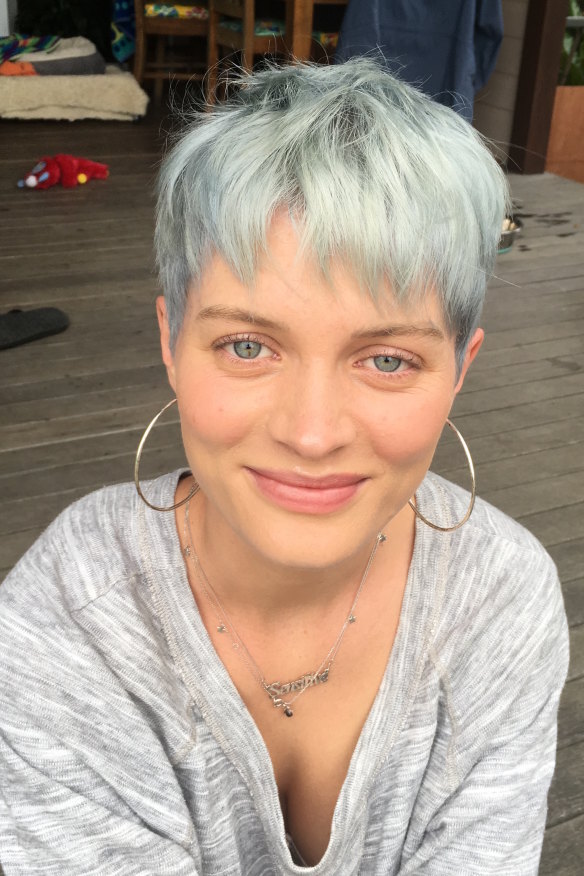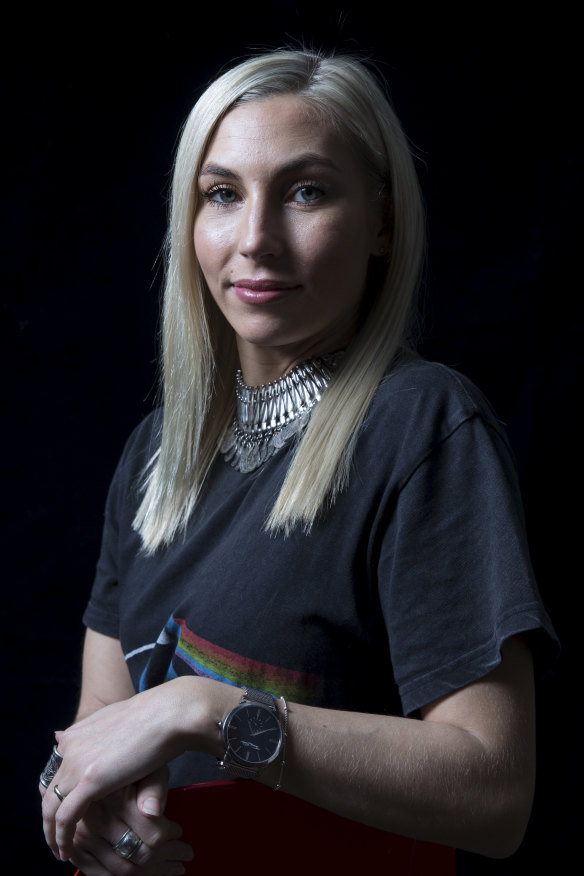Explainer
- Explainer
- Women's health
What is endometriosis and how is it treated?
It's painful, debilitating and can land you in hospital – and one in nine Australian women suffer from it by their early 40s. What is endometriosis?
By Rachel Clun and Mary Ward
It's possibly the most common condition suffered by women that we hear the least about. And the symptoms are seldom mild. Heavy bleeding. Terrible cramps and pain. Fatigue. Migraines. These are just some of the symptoms experienced by women living with endometriosis.
Endometriosis – often shortened to “endo” – is caused when tissue similar to the lining of the uterus grows in other parts of the body such as the ovaries, the lining of the abdomen and outside the uterus.
In the first comprehensive national report of its kind, the Australian Institute of Health and Welfare (AIHW) found that one in nine women born between 1973 and 1978 had endometriosis by the ages of 40-44. For a younger group, born between 1989 and 1995, one in 15 were diagnosed with the chronic condition by 29.
The disease cost the economy an estimated $7.4 billion in 2017 to 2018, through productivity losses and reduced quality of life – and the AIHW says that may be an underestimate given the difficulties in diagnosis.
What are the symptoms of endometriosis?
The pain can be debilitating and often crippling for between 50 and 80 per cent of women, says Professor Jason Abbott from UNSW’s school of women’s and children’s health. “Some of these women require long-term care, multiple surgeries and multiple medical managements to manage their pain,” he says.
Pain can range from severe period pain that interferes with everyday life to painful sex, pain while going to the toilet, and lower back and leg pain.
As well as fatigue and migraines, infertility is another factor for some women.
“We know that about 50 per cent of women who present with infertility will have endometriosis as well,” Professor Abbott says.
The AIHW report found there were about 34,200 instances of women being admitted to hospital because of endometriosis in 2016 to 2017. Nearly four in five of those hospital admissions were among women aged 15 to 44, while the greatest number was for women aged 30 to 34.
“Whilst we know that it can occur in very young women, it's most likely to be diagnosed in women's 30s as the disease develops and their symptoms progress,” Professor Abbott says.
How is it diagnosed?
Diagnosis of endometriosis can take an average of seven years from the time symptoms first appear.
Rose Dooley, 25,was suffering from pelvic pain so she visited several GPs, a women’s sexual health clinic and a gynaecologist but she became frustrated that she was offered only contraception as a treatment, rather than the opportunity for a confirmed diagnosis.

Rose Dooley: "From everything you’re saying, it sounds like you have it."
It was only when she visited a specialist excision surgeon recommended by endometriosis Facebook education group Nancy’s Nook that she finally received the news she had been desperate for.
“I went in there with all this stuff, all these explanations, and was so prepared and so nervous, and within 10 minutes he was like, ‘From everything you’re saying, it sounds like you have it.’”
Professor Abbott, who has a PhD on the surgical treatment of endometriosis, says the gold standard for diagnosing endometriosis has been keyhole surgery, called a laparoscopy, to investigate and take samples of the endometrial tissue for testing. However, he says doctors are now making clinical diagnoses based on signs, symptoms and investigations including physical examinations and specialised ultrasounds.
“We're getting much better at diagnosing the disease in its earlier time-course rather than just when it becomes end-stage and starting to affect the ovaries and have a substantial impact,” he says.
How is it treated?
While there are several ways to manage the condition, there is no cure.
One option is hormonal treatment, using progesterone-based contraceptives including the pill, IUDs and Implanon. “That is to try and reduce the overall levels of estrogen in the body,” Professor Abbott says.
Painkillers and anti-inflammatories can help manage pain, Professor Abbott says, and surgery is another option, although it is not without risks. “Surgery can be effective but, again, it can be quite difficult surgery and complex.”
What is adenomyosis?
Adenomyosis is an even less well-known condition than endometriosis, despite the fact many studies suggest between 20 and 35 per cent of women have it.
They are similar conditions, in that they’re caused by endometrial tissue growing in places it shouldn’t, and often women who have adenomyosis also have endometriosis.
However in adenomyosis, this tissue grows into the muscle walls of the uterus. It can lead to a painful and enlarged uterus and heavy bleeding.
It can be diagnosed in a similar way to endometriosis, and can also be treated medically with painkillers, anti-inflammatories and hormonal contraceptives including the Mirena. It can also be treated surgically.
The most extreme surgical procedure and the gold standard treatment for severe adenomyosis is a hysterectomy - the complete removal of the uterus - as it removes the potential for the disease to recur, however that treatment is not suitable for women still wanting to have children.
Expensive too. From April 1, following government reform, laparoscopy has been covered under the bronze level of all Australian private health coverage. Without it, wait times can be long: Dooley was told there was a two-year wait for an operation on Medicare. To expedite surgery without private health cover would have cost her between $10,000 and $16,000. She was devastated.
“I kind of thought that, when I find someone who understands it, when I find someone who is able to treat it, it would all fall into place,” she says, adding that, even if she decided to get private health cover, her endometriosis would have been treated as a pre-existing condition, meaning she would have had to pay fees for six months before being able to access treatment.
In the end, she says it was a huge relief to receive a Medicare spot early. “But I don’t really find much comfort in the fact that so many women have [endometriosis] because it’s super overwhelming.”
Some treatments can also cause infertility. Kate Pascoe Squires, 40, had multiple three-month courses of Goserelin, a drug that simulates the hormonal changes of menopause, to shrink the growths on her bowel before a number of her “nine or 10” surgeries.
The mother of two, whose children were both conceived using IVF, does not recall ever being told it could affect her fertility.

Kate Pascoe Squires has had surgery several times for endometriosis.
“I have friends who are now going through this at 35, 40, and I'm suddenly thinking, actually that was a big deal to shut my ovaries down at 25.”
Professor Abbott says alternative therapies, including the use of cannabis extracts, are increasingly popular.
“We're starting to understand that things like acupuncture, things like natural therapies may have a role, but there's still a lot of science that we need to develop in there,” he says. “We should be getting the science first before recommending widespread use [of cannabis treatment] because they do come with a set of complications and side-effects.”
Pascoe Squires, whose surgeries included a hysterectomy, is now exploring alternative therapies as her pain tends to flare if she gets run down.
“I find exercise helps me but often I don't feel well enough to exercise. I just started seeing a pain specialist who is taking an 'outside in' approach,” she says.
Although alternative therapies such as acupuncture, naturopathy and meditation have helped Pascoe Squires, she says what works can really depend on the pain she has that day.
What work is being done on treatments?
Endometriosis has been known to medical professionals and researchers for more than 100 years, says Professor Abbott.
“It's been very well documented for a very long time but really ignored, mainly because it’s both benign and, classically, women's conditions have also been under-funded and under-recognised.”
However, Professor Abbott says Australia is recognised as a “powerhouse around the world” for its research. As well as projects from the University of Melbourne and UNSW, he says University of Queensland researchers have pioneered work in genetics and endometriosis for 25 years.
The world’s largest study into the genetic causes of endometriosis was led by the University of Queensland’s Professor Grant Montgomery and QUT’s Dr Dale Nyholt jointly in 2017.
The study, which analysed data from more than 17,000 cases, confirmed nine of the 11 gene regions previously associated with endometriosis, as well as linking five additional regions. The work is, as Professor Montgomery stresses, preliminary.
“The thing about genetic risk factors is there are a lot of them and their effects are small,” he says. “[You] can’t just add up the risk factors and say a woman is going to get endometriosis.”

Syl Freedman has spent years lobbying for more government recognition of the disease.Credit: Jessica Hromas
What's next?
The Queensland team is working on analysis using larger data sets in the hope of identifying more associated gene regions, although it is a complicated process.“[We have] the chance to make some real progress, but there’s still a lot of work ahead of us and it’s going to require significant funding,” says Professor Montgomery, whose research is funded by the United States through the International Endometriosis Genetics Consortium.
Funding and awareness have always been issues for experts on endometriosis, Professor Abbott says. “Up until last year we'd only had about $15 million in 15 years,” he says.
Syl Freedman, the co-founder of EndoActive and member of the Australian Coalition for Endometriosis, says it took years to get the federal government on board with an action plan and funding for endometriosis research.
The lobbying led to the National Action Plan for Endometriosis, launched in July 2018 by Health Minister Greg Hunt, which aims to raise awareness and educate people about the disease. In April, Mr Hunt announced an additional $9 million in funding for research to help develop better diagnostic testing and investigate the causes of the disease.
Professor Abbott says this has led to establishing the National Endometriosis Clinical and Scientific Trials network. “That's a national consortium of clinicians, scientists and, very importantly, patients [coming] together to start looking at where we can best spend the limited resources of research funding to get the most impact for women now, but also into the future.”
Professor Montgomery, who has been working in the field for 20 years, says the level of research and discovery is “much more rapid now”.
Freedman says the AIHW report is a huge step forward for endometriosis research but it's just one aspect of statistics on the disease that could be useful. “It's just the start, and it really shows us how much data we have missing on women with endo.”
Let us explain
If you'd like some expert background on an issue or a news event, drop us a line at explainers@smh.com.au or explainers@theage.com.au. Read more explainers here.